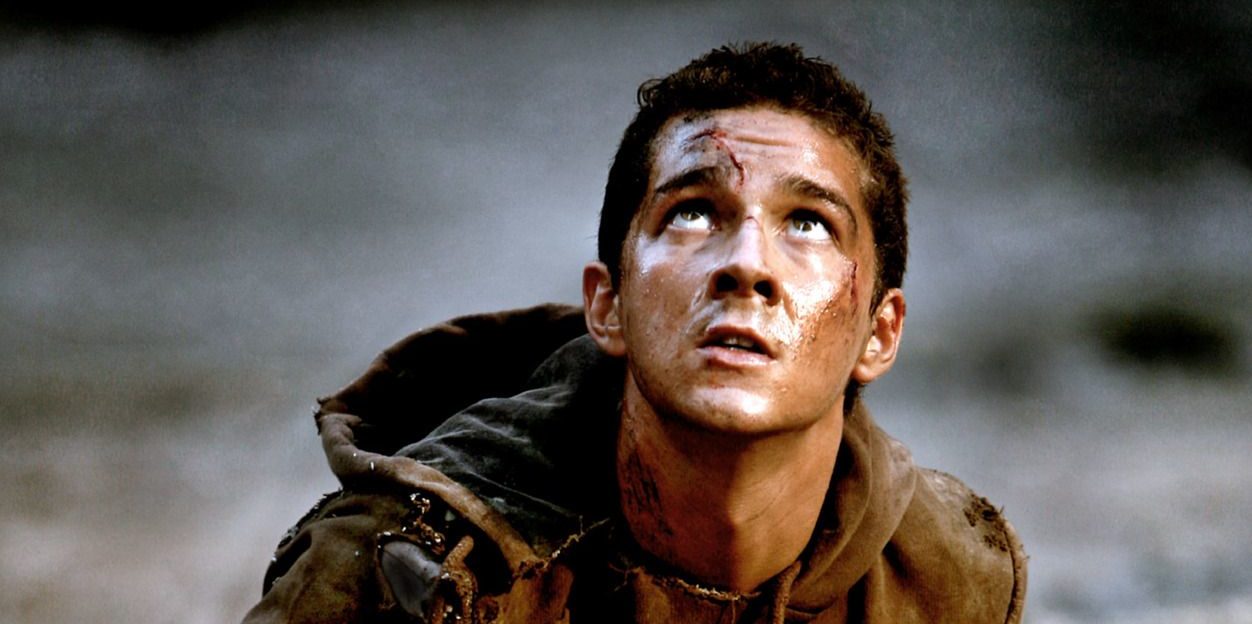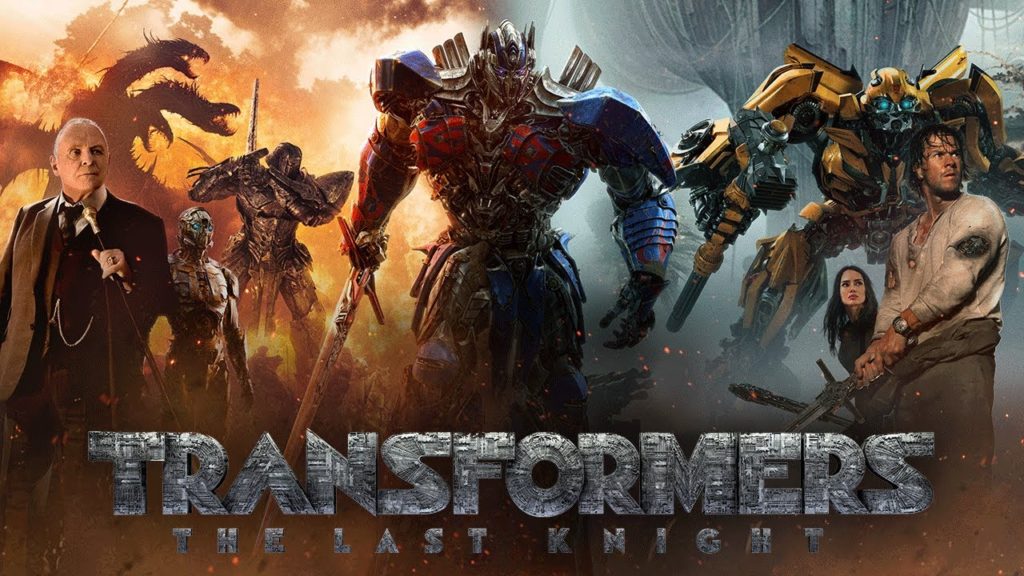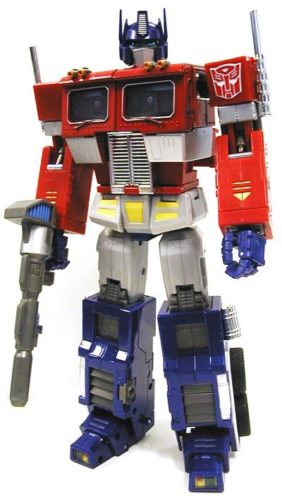
This concludes our friend Jeremiah Lawson‘s three-part series on Transformers. If you missed the other two installments, begin at the beginning!
For the symbols of mythology are not manufactured; they cannot be ordered, invented, or permanently suppressed. They are spontaneous productions of the psyche, and each bears within it, undamaged, the germ power of its source. […]
There is no final system for the interpretation of myths, and there will never be any such thing. […]
Not the animal world, not the plant world, not the miracle of the spheres, but man himself is now the crucial mystery. Man is that alien presence with whom the forces of egoism must come to terms, through whom the ego is to be crucified and resurrected, and in whose image society is to be reformed. Man, understood however not as “I” but as “Thou”: for the ideals and temporal institutions of no tribe, race, continent, social class, or century can be the measure of the inexhaustible and multifariously wonderful divine existence that is the life in all of us.
The modern hero, the modern individual who dares to heed the call and seek the mansion of that presence with whom it is our whole destiny to be atoned, cannot, indeed must not, wait for his community to cast off its slough of pride, fear, rationalized avarice, and sanctified misunderstanding. “Live,” Nietzsche says, “as though the day were here.” It is not society that is to guide and save the creative hero, but precisely the reverse. And so every one of us shares the supreme ordeal—carries the cross of the redeemer—not in the bright moments of his tribe’s great victories, but in the silences of his personal despair.
– Joseph Campbell, The Hero with a Thousand Faces
 To Campbell, we the human race have become the great mystery of our own existence. Writing in the age of American ascendency in the aftermath of World War II, Campbell was writing with an eye toward a universal humanity, rather than regional, national, or ethnic interests. Demonstrating how he believed all the folk tales, myths, religions, and literary works of the human race were one, his aspiration was transparently not unlike the hopeful motto of Optimus Prime, “Till all are one.”
To Campbell, we the human race have become the great mystery of our own existence. Writing in the age of American ascendency in the aftermath of World War II, Campbell was writing with an eye toward a universal humanity, rather than regional, national, or ethnic interests. Demonstrating how he believed all the folk tales, myths, religions, and literary works of the human race were one, his aspiration was transparently not unlike the hopeful motto of Optimus Prime, “Till all are one.”
If Joseph Campbell’s warning was that the symbols of mythology were not manufactured and could not be ordered, invented, or suppressed, Hollywood has collectively taken up the challenge of manufacturing as many variants on Campbell’s monomyth as the market can bear. The monomyth became the template from which to manufacture one heroic journey after another, subsuming world literature and religions under the aegis of a technical mastery of storytelling that has permeated blockbuster cinema since the late 1970s.
American writers have taken Campbell’s monomyth and found ways to transform myths and fables from being stories of “us” to stories of “me,” with film being one of many ways that life is enchanted or re-enchanted. Sam Witwicky is just Sam Witwicky, a petulant and entitled American male who tries to fast-talk his way out of fulfilling obligations if he can, but once he discovers he has a secret that could change “everything,” he misses no opportunity to exploit it. As easy as it is to lambast the Michael Bay Transformers films, there may be no cinematic franchise better suited to demonstrated to the United States what its popular-level cinema has gotten to. The accumulating mythology of the Bay films may be incoherent and self-defeating but that may be why they reward some consideration.
Transformers, as a brand, has been devoted to playing with our ambivalent relationship to the technologies we rely on. Will we be subjugated by our technology or remain masters of it? The battle between Autobots and Decepticons may be a mythical convenience, asking whether we will be guided by our technology of commerce or our technology of war, because history has shown that this division in use is generally arbitrary. The question of whether we will work with Optimus Prime to build a world of peace or be dominated by Megatron, the warlord, may misread the way we actually relate to our technology. Certainly film critics and historians wouldn’t like the comparison, but Transformers is continuing a question posed by other more celebrated films like Fritz Lang’s Metropolis or Stanley Kubrick’s’ 2001.
What separates Transformers from the more celebrated highbrow films is not just the less “artful” presentation; it is the fact that the mythology that has been developed around the toy line has been used to create a cult that can sustain a market. In higher brow art, cults of devotion revolve around scholarship, criticism, and respectful and respectable remakes. In pulp fiction and lowbrow franchises like Transformers, devotion is shown in a proliferation of sequels, reboots, and media-saturation. At one extreme is the question “Will I have to study this in college?” and at the other “Are people still buying these toys?”
 More than any other blockbuster franchise, the Transformers movies, and the Bay films in particular, have given us a real-time show of what can happen when a bid at cinematic mythology fails and writers attempt to course-correct mid-franchise to no avail. One of the core mistakes of the live-action franchise was to pin everything on the human characters. The Campbell-style monomyth was only deployed for the self-actualization of human characters without any real thought for why the Cybertronian lore would matter beyond that moment of self-actualization.
More than any other blockbuster franchise, the Transformers movies, and the Bay films in particular, have given us a real-time show of what can happen when a bid at cinematic mythology fails and writers attempt to course-correct mid-franchise to no avail. One of the core mistakes of the live-action franchise was to pin everything on the human characters. The Campbell-style monomyth was only deployed for the self-actualization of human characters without any real thought for why the Cybertronian lore would matter beyond that moment of self-actualization.
As the mythology in the Bay films expanded to include the entire universe, the lore shriveled down to Arthurian clichés, with powerful human saviors at the center. Cade Yeager uses Excalibur to save Optimus Prime. Sam Witwicky is born into a mystical secret society. Vivian Wembley is a descendant of Merlin. In any storyline besides Bay’s films, the humans would be secondary to the Transformers, who would be defending them. If we may dare to elicit a message from these films as American films, they suggest that saving the world is simply a stepping stone to the real moment of triumph: attaining a solid reputation as a go-getter who gets an attractive romantic partner and can coast along on past victories. Through popular film, the monomyth that Campbell thought could in some way combat egoism has become a template for films that celebrate egoism, if only the carefully confined egoism of the American blockbuster protagonist.
That can explain why, in the end, the last Bay film brought in more incoherent Cybertronian lore that was really intended to prop up a neo-Arthurian legend that fulfills the heroic destiny of characters we don’t care about. It’s possible the increasingly blank slate nature of the characters has been part of the point, that writers have been refining a new kind of character who is not a surrogate for the author with a message but a surrogate for the presumed buying demographic that invests in these stories. That could explain ever casting Shia LaBeouf to begin with. Yet many fans of Transformers seem to have steadily and vehemently turned on the Bay franchise.

Maybe Joseph Campbell was right, you can’t really manufacture the symbols of mythology, and the downward spiral of the Bay films may be an apt demonstration that Hollywood couldn’t manufacture a compelling mythology with Transformers across five movies.
But even amid the wreckage of these stories there may be things to learn.
Where the seminal 1986 film established a kind of religion of Optimus Prime as a self-sacrificing king, the Bay films present an Optimus Prime whose bids at sacrifice depend on the decisions of humans. Compare these films to any of the television shows in which the robots themselves are front and center, Wagnerian gods doing battle, and the Bay films come across as a franchise exploring American exceptionalism and its discontents. In the Bay-directed Transformers films the United States became a global superpower by leveraging its knowledge of Cybertronian technology. Yet in so doing it continually unleashes a technological maelstrom of war that threatens to obliterate life on the planet.
As the movies progress, the United States government and military become convinced the Autobots and Decepticons have to be destroyed and that the United States military-industrial complex can do better than their Cybertronian allies and enemies. Yet at the moments when the United States is most confident it can contain and destroy the Decepticon legacy, it discovers that it has been deceived (of course), and that it is now the servant of a malevolent alien technological force it can’t control. It then falls to the human hero—whether a Sam Witwicky or a Cade Yeager or the women in their lives—to save Optimus Prime, who can then save us from annihilation. Given how all these films begin with a cube called the AllSpark, it’s less a legend of Faustian hubris than the opening of Pandora’s Box.
But it is the Faust legend in its Americanized form that may be reflected best in these films. Jeffrey Burton Russell has pointed out in his books about the Devil that in many an American Faust legend, the Yankee prevails by using a fake name or insisting on a trial by a jury of peers and, so doing, beats the Devil at his own game. A crucial weakness in Campbell’s monomyth is how useless it is at navigating regional differences between European and American forms of the Faust legend. In American takes on the Faust legend, there may be time to be redeemed by the love of a good woman or, more likely, by conning our way out of our deal with the Devil. After all, Optimus Prime is there to bail us out.
 The Transformers films may be overlong, overstuffed, brimming with cardboard characters and a self-vitiating mythology but the persistence with which Hollywood has committed to these films suggests that even if the symbols of mythology can’t be manufactured or mass-produced, the American film industry is determined to keep on trying and has people working in it who believe that, with some more effort, Transformers can remain one of those new mythologies. The people working on the films just needed no less than five films to not figure out what that mythology is about.
The Transformers films may be overlong, overstuffed, brimming with cardboard characters and a self-vitiating mythology but the persistence with which Hollywood has committed to these films suggests that even if the symbols of mythology can’t be manufactured or mass-produced, the American film industry is determined to keep on trying and has people working in it who believe that, with some more effort, Transformers can remain one of those new mythologies. The people working on the films just needed no less than five films to not figure out what that mythology is about.
But Transformers isn’t the only franchise in which a central axiom of the story collides with plot mechanics. The Terminator franchise has characters declaring, “There is no fate but what we make,” even though without a Skynet in the future to inadvertently cause his birth, John Connor could not have been born to believe against all odds that there is no fate but what we make and that Skynet can be destroyed. James Cameron’s Avatar can be held up as depicting a society that has no need of the market-driven branding dynamics that Avatar itself has depended upon to be one of the most successful films in the history of popular cinema. There are people working in film and television who are atheists but who can proudly say they have developed franchises with rabidly loyal cult followings and planned things that way. Take Joss Whedon’s Buffy the Vampire Slayer, for instance. What may be most remarkable about the legacy of the monomyth as the new “total work of art” is not how pervasive cults of film are, but the way this totalizing narrative manifests outside cinema. Since the 19th century, thinkers in Europe have come to reject the idea of the total work of art as having a legacy that led to totalitarianism, as described by David Roberts’ work. But Americans refined the total work of art past the point of art into a kind of applied science, the social science of developing cults of commercial franchises, that can be involved in every area of your life, from your very first childhood toys to the films you have to study in college.

COMMENTS
Leave a Reply












